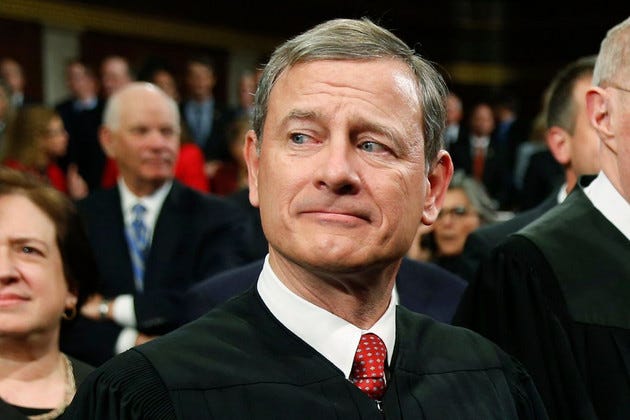Bonus 88: Chief Justice Roberts Turns Right
The Trump immunity ruling was a fitting capstone to a term defined by the Chief Justice's sharp turn away from institutional moderation—a shift that could potentially have cataclysmic effects.
Welcome back to the weekly bonus content for “One First.” Although Monday’s regular newsletter will remain free for as long as I’m able to do this, much of the bonus content is behind a paywall as an added incentive for those who are willing and able to support the work that goes into putting this newsletter together every week. I’m grateful to those of you who are already paid subscribers, and hope that those of you who aren’t will consider a paid subscription if and when your circumstances permit:
Notwithstanding that today is a holiday (Happy Fake Birthday, America!), and even after Monday night’s live AMA (thanks to those who participated!), I had to write about the Trump v. United States immunity ruling today—or, at least, the broader pattern for which it appears to be the archetype. I began the term wondering about the “3-3-3 Court,” and whether it would be Justice Kavanaugh or Justice Barrett who would end up as the more likely vote to join the Chief Justice in those cases in which he was more inclined to join the Democratic appointees. But the last few weeks of the term reflected a very different accounting—one in which Justice Barrett was more likely to join the Democratic appointees than any of the other Republican appointees, and one in which the Chief Justice turned, for reasons I don’t fully understand, sharply to the right.
Simply put, it’s not Justice Kavanaugh or Justice Barrett who has emerged as the Court’s median vote; it’s the Chief Justice—with Justice Barrett to his left. And it appears to be a very different Chief Justice than the one who was the median vote as recently as four summers ago—one who appears to be far less worried about how the Court is perceived by its critics (or about its institutional legacy and legitimacy more generally) than he previously had been. If that shift holds, it could have ominous—indeed, potentially cataclysmic—effects for the Court in the long term.
For those who are not paid subscribers, the next free installment of the newsletter will drop on Monday morning. For those who are, please read on.
Keep reading with a 7-day free trial
Subscribe to One First to keep reading this post and get 7 days of free access to the full post archives.




